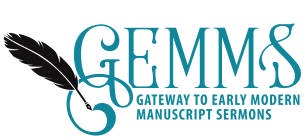Richard Snoddy; David Robinson
ODNB (Article: 5143)
The third child of James VI of Scotland and his wife Anne, born in Dunfermline Castle, Scotland, 19 November 1600. Created duke of Albany at his birth, and duke of York in 1605. His tutor, Scottish presbyterian Thomas Murray, noted his particular aptitude in divinity, a view shared by his father. His older brother Henry died in 1612 making Charles heir apparent to Britain and Ireland. He inherited Henry's Calvinist chaplains, Archbishop George Abbot and James Montagu, bishop of Bath and Wells, while his father instructed him in kingship. He was at the centre of James' foreign policy during the 1620s as he sought a marriage between Charles and the Spanish infanta. In 1623 Charles traveled to Spain to court the Spanish infanta and conclude a treaty with Spain to de-escalate the ongoing conflict in Central Europe. The failure of this endeavour caused him to become a strong advocate for war with Spain upon his return later that year. Negotiations then began with France to support England's involvement in the Thirty Years War, leading to Charles marriage to Henrietta Maria in May, 1625, after he ascended to the throne that March. Charles' military efforts were frustrated by an uncooperative parliament which refused the necessary funds and was suspicious of his favourite, George Villiers, duke of Buckingham. With Buckingham assassinated in 1628, and his military expeditions largely a failure, Charles made peace with France in April 1629 (with whom he was in conflict with supporting the Huguenots) and Spain in November 1630.
The 1630s were a period of peace and prosperity, but also controversy. His imposition of a kingdom-wide "ship-money" levy, traditionally only used in war-time emergencies, in 1635 was unpopular, and resulted in a legal challenge. Along with Archbishop of Canterbury William Laud, the King embarked on a campaign of strengthening the established church, which included funding for renovations (notably St Paul's) and training of ministers, but also strict enforcement of conformity to the church's articles and canons. He also applied this approach to Scotland, where he sought to align Scottish religious practice closer to England's in the five articles of Perth and introduce a common prayer book. The result was the formation of the Covenant movement which led a rebellion against these changes in 1637. Charles was reluctant to engage the Covenanter army without parliamentary funding, so called Parliament in spring 1640, but was met with reluctance in the House of Commons and dissolved it in May. He decided to invade Scotland without parliament's support and when that ended in disaster, he was forced to recall it in November 1640. Parliament feeling angry and empowered forced Charles to concede to increasingly extreme demands. On 25 August 1641 he signed a treaty with the Covenanters, abolishing episcopacy in Scotland, but was then faced with a new rebellion in Ireland. In January 1642, an attempt to arrest 6 traitors in parliament failed, igniting tensions, and encouraging Charles to leave London. That Spring, both sides began making preparations for war.
Thereafter followed the first English Civil War, 1641-1646 ending with Charles surrendering. From his imprisonment, he helped organized a new coalition leading to the second civil war, 1648-1649. The new rump parliament created by a military coup established a high court of justice to try Charles for treason if he did not abdicate. He refused to do so and faced trial, which he mocked and denied its legitimacy throughout. He was executed 30 January 1649. After his death, a cult of veneration of him as a martyr developed. The Eikon basilike, a purported spirtual autobiography of Charles, was widely read and a tradition began of commemorating the anniversary of his execution in sermons. In 1660, parliament declared him a martyr and added him to the calendar of Anglican saints.
